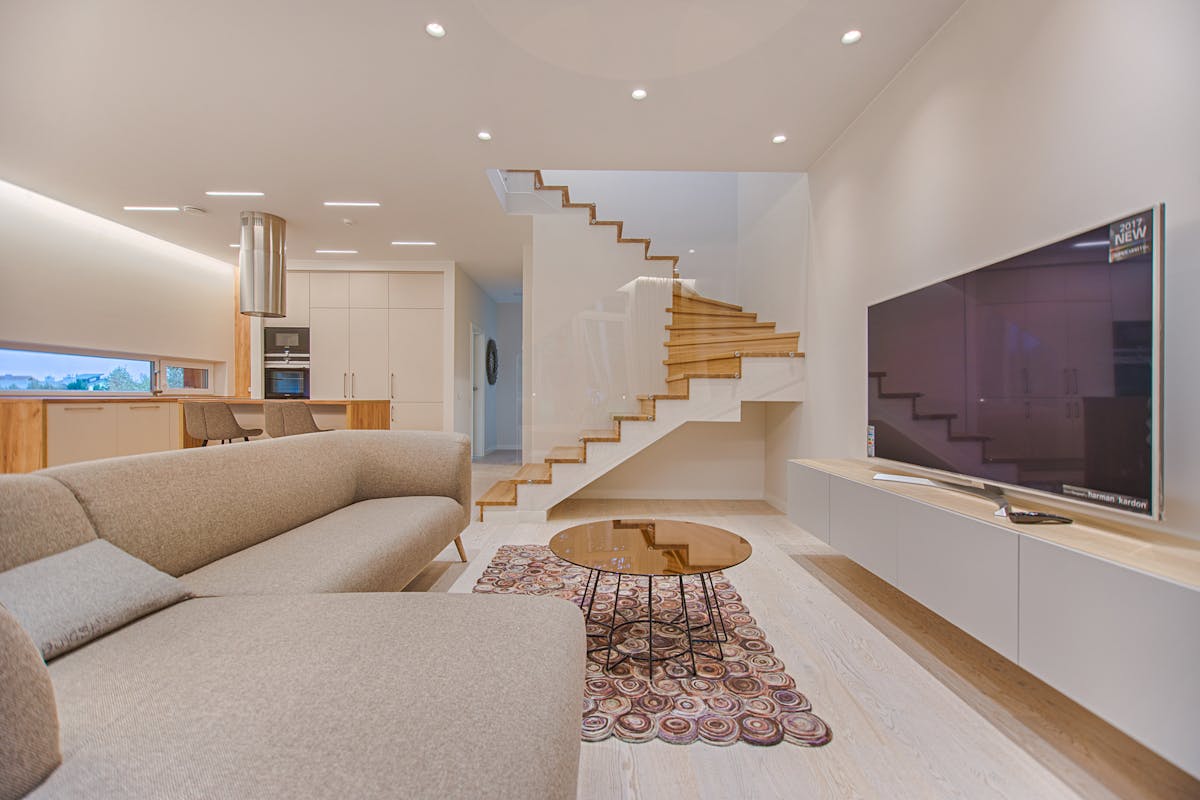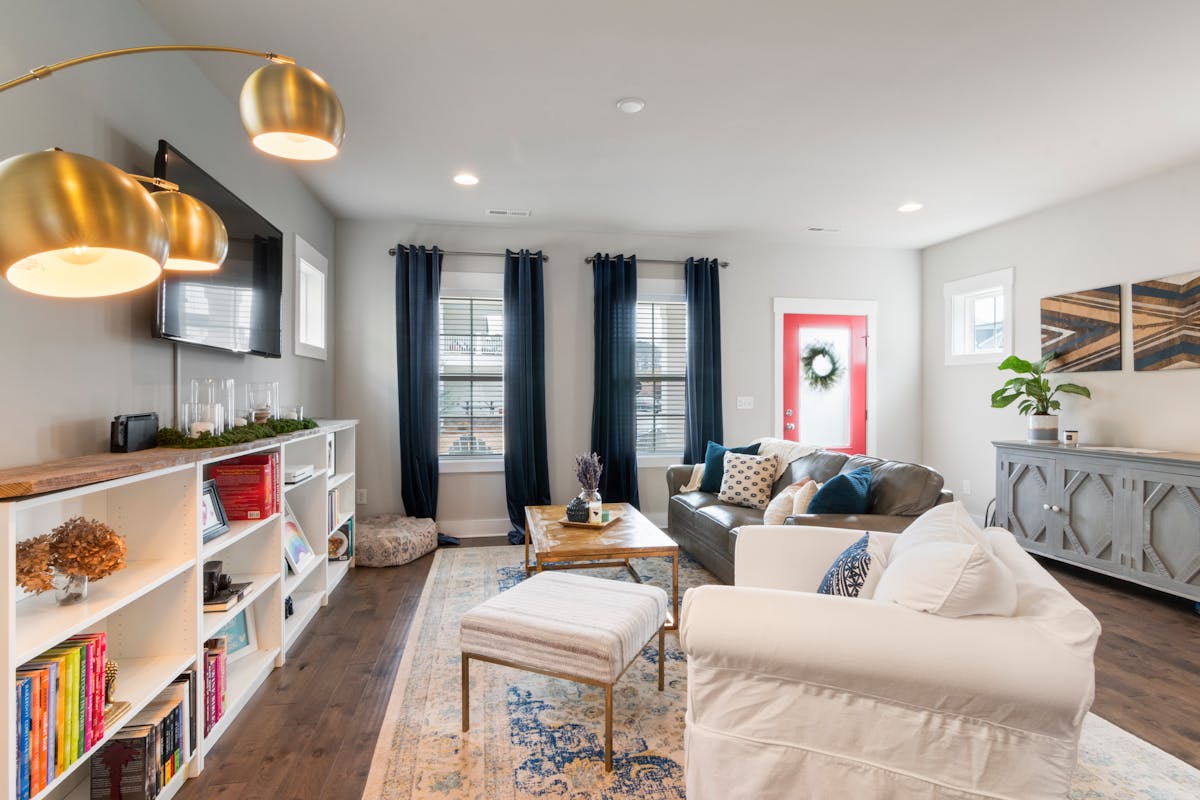
- Start with a neutral color base to merge modern and rustic elements without overwhelming the space.
- Blend contrasting textures and materials, like sleek metal with rough wood, for visual interest and balance.
- Focus on statement pieces that embody both aesthetics, ensuring they’re high-quality and functional within the space.
- Integrate natural elements, like plants and natural light, to unify and breathe life into both design styles.
- Personalize with curated accessories that reflect your style, but practice restraint to avoid clutter and maintain intentionality.
The fusion of modern and rustic home aesthetics has become a hallmark of exquisite design, creating stylish, welcoming, and profoundly unique spaces. It offers the best of both worlds—the clean lines and minimalism of a modern interior alongside the warmth and authenticity of a rustic setting. If you’re a homeowner keen on creating a balanced, harmonious living space that marries contemporary design with timeless, natural elements, you’re in for a treat. This comprehensive guide will explore five essential tips for seamlessly blending modern and rustic home aesthetics.
Tip 1: Choose a Neutral Base
The key to successful fusion is to build on a neutral foundation. Neutral colors, such as white, beige, greige, or soft shades of gray, are versatile, elegant, and calming. They provide the perfect canvas for layering diverse design elements without creating a chaotic environment.
The Neutral Palette
Incorporating a neutral color palette for your walls and larger furniture pieces is the starting point for a cohesive design. This simplistic base allows for rustic and modern accents to be featured without clashing, giving your space an open and airy feel.
Flooring and Walls
Selecting floorings like polished concrete for a modern touch or reclaimed wood for a rustic vibe can be strong visual anchors for your living space. These choices embody the textural qualities of both aesthetics and are adept at grounding the room.

Tip 2: Mix Textures and Materials
To achieve the perfect blend, play with contrasting materials and textures. Modern homes often prioritize glass, steel, and wrought iron, while rustic elements usually feature raw, natural materials, such as rough-hewn wood, stone, and clay.
Contrasting Textures
You can pair a plush leather couch with a sleek metal coffee table or a distressed wooden dining table with contemporary acrylic chairs in a modern-rustic design. These combinations create visual interest and tactile appeal, bridging the gap between the two design styles.
Symmetrical and Harmonic
Maintain a sense of symmetry and harmony when mixing textures. For instance, if you have a smooth, wire-brushed wood floor, balance it with a rough stone accent wall to provide a pleasing equilibrium.
Textured Accents
Soft furnishings like nubbly tweed or chunky knit throws are the epitome of cozy rustic textures. Combining these with smooth surfaces, such as polished ceramics or lacquered furniture, can introduce variety without overwhelming the space.
Tip 3: Focus on Key Pieces
Decluttering and focusing on key focal points are pivotal in blending modern and rustic designs without creating visual chaos. Integrate statement pieces that capture the essence of both worlds.
The Statement Pieces
An oversized, industrial pendant light works wonders in a kitchen with exposed ceiling beams, serving as a striking centerpiece that combines modern lines with rustic materials. In the living room, a thoughtfully chosen artwork can be the focal point, blending subdued colors with bold textures.
High-Quality Furnishings
Invest in high-quality, timeless furnishings that align with your desired aesthetic. These pieces should be sturdy and well-crafted, capable of withstanding the test of time and adapting to evolving trends.
Space Optimization
When choosing essential items, consider the scale and function within your space. This ensures that the selected pieces make a style statement and help define the different living areas in an open-concept space if you have one. For example, you can use modern sliding barn door hardware to divide a living room from a kitchen while adding a rustic element. It’s a functional and stylish way to create defined spaces within an open floor plan.
Tip 4: Incorporate Natural Elements
Modern and rustic designs are inspired by nature, albeit in different ways. Integrating natural elements brings life and tranquility into your space, unifying between contrasting styles.

The Green Touch
Plants and flowers are the most straightforward way to incorporate the freshness of the outdoors into your home. Consider potted succulents or air plants in geometric terrariums for a modern twist. Opt for larger potted trees or wildflower arrangements in natural, unrefined containers for a rustic flair.
Openness and Light
A critical feature of modern design is an emphasis on natural light. Maximize the amount of daylight your home receives by ensuring windows are unobstructed. This may mean removing heavy drapes or replacing them with lighter, sheer alternatives in more rustic spaces.
Tip 5: Personalize with Accessories
Accessories are the soul of any design and are particularly vital for blending aesthetics. Personal touches can turn a house into a home, making the modern-rustic fusion truly yours.
Art and Decor
Select decor items and artwork that resonate with you on a personal level. This could be a collection of antique pottery, a gallery wall of family photographs in modern frames, or a well-curated display of found objects. These infuse the space with character and serve as conversation starters.
Limitation is Liberation
While personalization is vital, exercise restraint to avoid clutter. Select meaningful accessories that stand out in each room rather than filling every surface with items. This approach will keep your spaces looking intentional and allow each item to play its part in the overall design.
Blending modern and rustic home aesthetics is a thoughtful process that requires a deft touch. By starting with a neutral base and layering textures, focusing on statement pieces, incorporating natural elements, and adding personalized touches, you can create a home that is visually stunning and a true reflection of your personal style. Remember, the goal is not to marry the two design styles completely but to find a harmonious balance between them. Happy styling!
